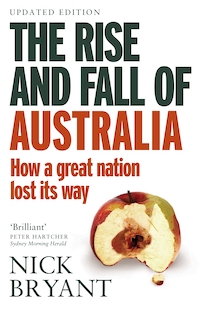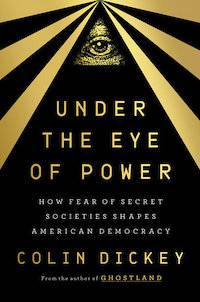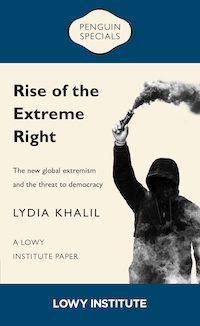Public ideas
The prime minister factory
What do prime ministers John Gorton, Malcolm Fraser, Bob Hawke, Kevin Rudd, Tony Abbott, and Malcolm Turnbull have in common?
OK – they’re all of one gender. But the other is Oxford.
Nick Bryant, writing in the Sydney Morning Herald, points out that Oxford University has had an outsize influence on Australian political and business classes: The prime minister factory: how a UK uni is shaping Australian life.
He describes how in the UK the “Oxocracy” has been regarded as a malign force, as anyone following the behaviour of Tory Party luminaries can observe. But for Australia he has a different view:
Here, Oxford has predominantly been an influence for good. This is partly because the competition for its international scholarship schemes, including the coveted Rhodes scholarship, is so rigorous, and partly because so many talented Australian Oxonians have not ended up in Canberra politics.

He goes on to describe a number of Oxford graduates who may not have “ended up in Canberra politics” but who nevertheless have had a strong influence on Australian politics – Michael Fullilove of the Lowy Institute, Tim Soutphommasane who was our race discrimination commissioner, Tom Snow who had a strong influence in the marriage equality campaign, and Jeni Whalan who heads the government’s Strengthening Democracy Taskforce, to name a few from his list.
Bryant asks if there is a peculiarly Oxford mindset? He certainly sees students’ sharing lives with energetic and idealistic people from all over the world as formative. He believes that Malcolm Fraser’s Oxford experience was influential in the way he effectively ended the White Australia Policy and in his becoming a strong anti-apartheid campaigner.
To return to that list of prime ministers, they all had ideas about what Australia could become. Tony Abbott’s vision of a pre-Reformation feudal Australia may not have appealed to many people, but at least it was a vision, in contrast to the insipid suburbanism of other Coalition prime ministers.
Bryant’s article is about Oxford, with reference to its PPE – Philosophy, Politics and Economics – degree, which gives students the opportunity to study in the space where those disciplines, and other disciplines, come together. It is not the only institution to do this – Harvard’s Kennedy School and the London School of Economics are two other institutions with such broad and liberal courses.
Such institutions seem to be lacking in Australia. Our universities achieve high standards within specific disciplines, but their administrative and financial structures do not encourage the sort of interdisciplinary undergraduate and graduate studies to be found in universities such as Oxford.
Nick Bryant is author of The rise and fall of Australia: how a great nation lost its way, written in 2014 shortly after the election of the Abbott government. It’s a response to the Coalition’s fierce partisanship and its desire to drag our country back to an earlier era.
Conspiracy theories

The banality of conspiracy theories is the title of an article in The Atlantic by Colin Dickey. It’s mainly about an event in 1834, when the citizens of Boston burnt down an Ursuline convent. They were inspired by conspiracy theorists who convinced the crowd that the convent was a den of sexual iniquity where priests were doing terrible things to young women in captivity. Dickey goes on to describe how conspiracy theories, often concerning strange things done by Catholics, persisted in America into the following century.
He summarizes his general point:
Conspiracy theories tend to emerge in times of rapid cultural or demographic change; many of them reflect unease with that change, suggesting that it is not just the result of evolving values or newly emergent communities – the messy progression of democracy – but instead the work of a hidden network of nefarious actors whose ultimate goal is the destruction of America itself. And they often portray the American nuclear family, particularly its women and its children, as uniquely vulnerable and in need of protection.
Dickey is author of Under the eye of power: how fear of secret societies shapes American democracy.

Closer to home, writing in the Lowy Institute’s theinterpreter, Daniel Byman reviews a book by the Institute’s Lydia Khalil: Rise of the extreme right: the new global extremism and the threat to democracy.
Byman’s review – Right-wing extremists: the danger not of bombs but ballots – is essentially a summary of Khalil’s work. Conspiracy theorists are too muddled in their thinking to hold together as a powerful political movement: whenever they do they are prone to dissent and fragmentation. But they do wield political power. Byman writes:
Where right-wing extremists appear to be having the most success is not with guns or bombs but with ballots. In the United States, France, Poland and other countries, far-right candidates campaigning on anti-immigrant and other nativist issues have done well. Here the response goes far beyond traditional counter-terrorism, requiring not just a technical solution to violence but a broader social rejection of hateful ideas and people who foster them.
Oldies take to the streets too
Television and video footage of the recent French riots give the impression that demonstrations are for the young. Effie Karageorgos of the University of Newcastle has a short Conversation contribution: Not just a youth movement: history too often forgets older protesters. The accompanying photograph of a gentleman in the foreground dressed in a suit, white shirt and tie says it all.
The pictures from Israel, where citizens are demonstrating against Netanyahu’s attempt to disempower the judiciary, show people of all ages.